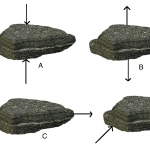What are some of the benefits afforded to organizations implementing voice recognition technologies in these settings
Case: IT in health care
What are some of the benefits afforded to organizations implementing voice recognition technologies in these settings? How can you quantify these benefits to access the value of the investment? Provide several examples from the case.
These is not margin for error when working in a health care setting. How would you go about implementing these technologies in this high-risk environment? What precautions or approaches would you take to minimize these risks? Develop some recommendations.
Voice recognition technology is one of the latest technology that can be used in many fields including medical field. Doctors can use this technology to make records related to patients. Nurses can also use this technology to record the histories of patients as each record can be stored in accordance to the voice recognition samples of the patients and can retrieve these records easily and efficiently. In medical field like clinics and hospitals, we have to be error free. The way software technologies are becoming intelligent, I am confident that the margin of error will decrease to a minimum soon.
I think that in high risk situations, voice technology can be used but with caution. There is no doubt that voice record keeping is simple and time efficient but the risk of these records being destroyed or misused is also present. The security of these records from natural and human harm is of utmost importance.
Answer 2
The organizations implementing voice recognition technologies derived several benefits from the use of this technology. The productivity of doctors and nurses increases as it reduces the number of hours spend on manually typing the notes and increases the quality of medical records. It is also improves workflow and quality of work. The results of the Vocollect AcuNurse voice assisted pilot project cited in the text shows how the technology used by nurses to manage and their patient care tasks improved their workflow by cutting time spend on the phone and updating patient records by 75 percent. These correspondence to a decrease in direct labor cost associated with increased efficiency of the staff. The implementation of the new technology also cuts on the costs of dictation and transcription services used by the hospitals, which are quite costly. As cited in the article, Mount Carmen St. Ann’s ER department prior to implementation spent about $500,000 on such services, and after the implementation of Dragon software, the cost was cut down to zero.
Despite the obvious benefits of the new technology, its implementation in an environment where human well-being is at stake warrants legitimate concerns. The data generated by the voice recognition technology, may not be 100% accurate which is poses a risk to patients. A robust quality control and certification of data accuracy needs to be built into the application. Any data created by the voice recognition software should be “cleaned” prior to entering into a medical records – verified and certified for accuracy by person created the record.



